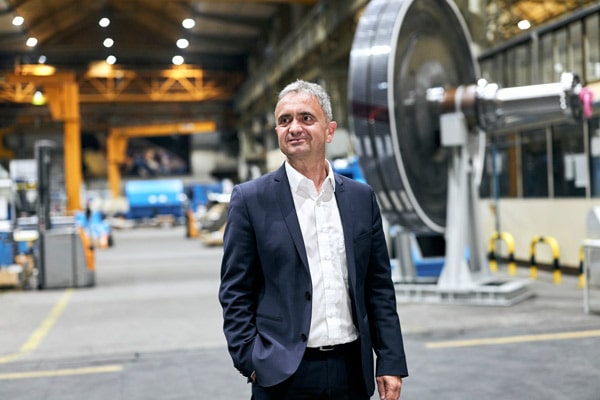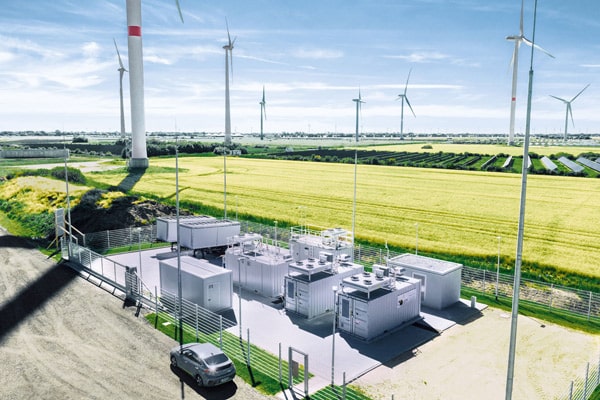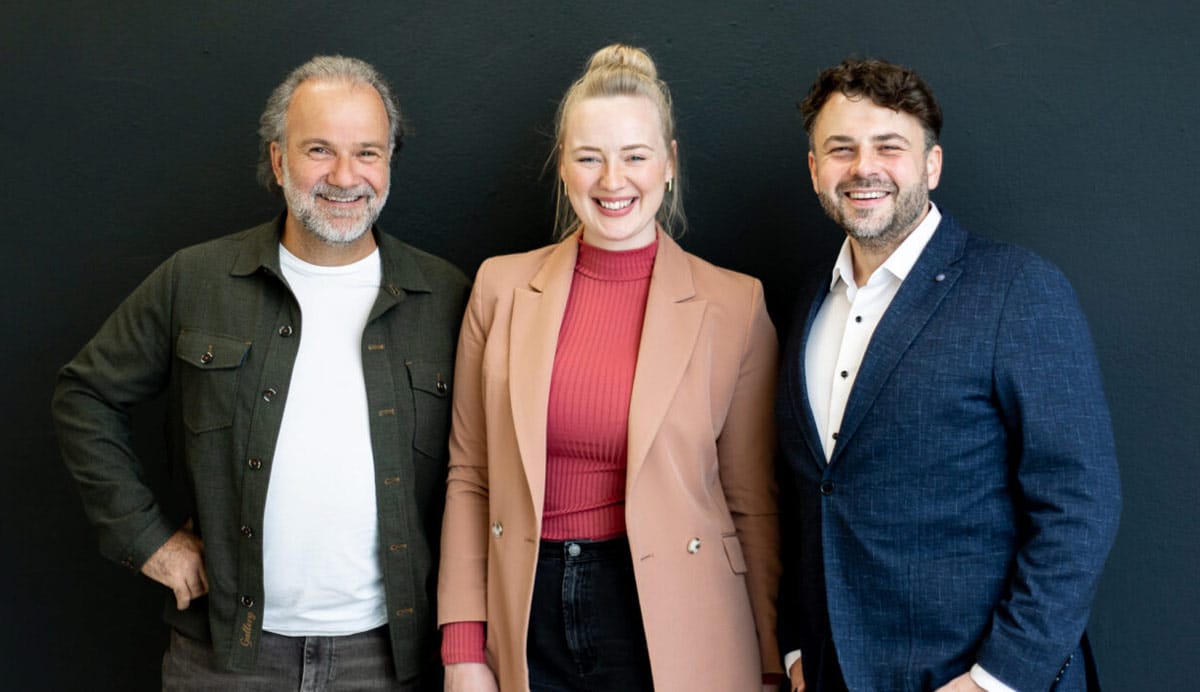Recently, the German government presented a draft provision on Klimaschutzverträge, also called Carbon Contracts for Difference (CCfD) in the EU. On the basis of a 15-year contract between the government and the business, those who do their production in a climate-friendly manner are to receive money for investments as well as annual funds as compensation for the more expensive green production. The main objective of the measure is to enable and accelerate the implementation of such systems. This policy instrument is interesting for, among other things, transformation of the industrial sector into a green hydrogen industry. Dr. Uwe Lauber, board chairman of MAN Energy Solutions, assesses the instrument from the point of view of a systems manufacturer.
H2-international: How impactful do you see the carbon contracts for difference proposed by the German government?
Dr. Lauber: We see the contracts for difference outlined by the federal government as a first step in the right direction. In 2021, the industrial sector of Germany had 120 million metric tons of CO2 emissions. Here, lawmakers could have an enormous influence, and they should make it now. It’s important that businesses who switch to lower or zero carbon technologies be protected from economic disadvantages through a market-compliant framework. The planned CCfDs offer such potential, but they will only be limited to a few industrial businesses at this time.

Among other things, according to the draft, the subsidized installation must achieve a 60 percent CO2 savings compared to the conventional technology after two years. In addition, the employed technology or energy carrier is required to theoretically enable 95 percent reduction. To what extent do you see the targets as realistic? Are these too ambitious or could they be even more so?
Technologically, achieving these targets is possible, since solutions for CO2 avoidance are already available and thoroughly developed. What’s important is that the bar is reasonably set, and economic and technical expertise is applied. Crucial for the German economy at the moment is that it finally succeed in getting major industrial projects off the ground – for example in establishing a hydrogen economy, synthetic fuels or CO2 capture.
What other suggestions do you have for improving the draft provision?
Based on the current version, only a few large industrial companies will benefit from the carbon contracts for difference. This is strategic to collect experience with the new instrument and move forward projects with especially high impact. Medium-term, however, CCfDs also need to be possible for small and medium-size businesses. We must also not lose sight of the fact that an impactful CO2 price still is the most significant and market-effective tool of influence. At this time, however, the price is clearly too low.
How important is the matter of speed? How quickly will the law be put into effect?
We’re running out of time. We must finally begin to implement climate-friendly technologies in major industrial structures. Only so can important operating experience be accumulated and, above all, the effects from scaling occur that will in the medium and long term lead to cost reductions and competitive prices, and ultimately ensure and create well-paid job positions in the industrial sector. The current draft proposal of the German government on CCfDs is a step in the right direction.
Details of the draft Klimaschutzverträge (carbon contracts for difference, CCfD)
According to the draft of a support provision presented at the end of last year by the German ministry for economy and climate protection (BMWK), businesses are to be able to bid in a call for tenders for carbon contracts for difference.
• This is a contract between the government and a business for climate-friendly production of a good. This applies, for example, to a switch from blast furnace technology to direct reduction with hydrogen in steel production.
• Such a contract guarantees the company for a period of 15 years payment that compensates for the higher costs of climate-neutral production. At the same time, it safeguards the company against fluctuations in the CO2 price and other risks.
Implementation is to be bound to various criteria:
• The submitted project must use available green or blue hydrogen as the energy carrier or, alternatively, use electricity that was generated from renewable energies.
• Once the contract is signed, the system is required to be put into operation within two years.
• The CO2 savings compared to conventional technologies must lie at 60 percent after two years, and a CO2 reduction of 95 percent with the used technology or energy carrier must theoretically be possible.
• CO2 certificate price as indicator: According to the draft, the federal support will end during the contract period if the actual CO2 price exceeds the CO2 price at the time of the drafting of the contract.
• The use of biomass is to only be eligible for support in exceptional cases.
To what extent, do you assume, is this support measure suitable for actually incentivizing projects in green and blue hydrogen? How would the market develop without such measures?
The exciting question is how to avoid the so-called chicken-and-egg dilemma in which potential producers of hydrogen base their investments on sure demand, while potential consumers conversely link theirs to sure supply. Here, instruments that stimulate the corresponding investments can help.
Among other things, the injection of CO2 underground will be supported. How do you evaluate this measure? What potential do you see here, for example, in terms of cost-effectiveness and feasibility, and for hydrogen?
Hydrogen and carbon capture technologies (CCUS) to a certain extent go hand-in-hand. CCUS is not only unavoidable if emissions that cannot be avoided are to be counterbalanced; the technology can also form the basis for a circular CO2 economy that ensures the capture, subsequent use and re-capture of CO2 − a kind of recycling system. CO2 is, for example, an important raw material for converting green hydrogen into urgently needed synthetic fuels.
What opportunities does the instrument open up for German mechanical and plant engineering, for example in the construction of electrolyzers?
Germany is already leading the world with its hydrogen and also CCUS technology. The diverse and dense industrial specializations also offer optimal conditions for positioning Germany as a climate champion and pioneer. There is a great danger, however, that other countries and regions will overtake us. And this is mainly due to the fact that the bureaucratic procedures for the implementation of concrete projects are far too lengthy. Other countries are much more effective, efficient and consequently faster.
To what extent do your systems meet the prerequisites in the proposal?
We already offer a variety of technologies that help industrial customers reduce their CO2 emissions. Among other things, we have considerably invested in our subsidiary H-Tec Systems, to develop the company into one of the top 3 suppliers of electrolyzers for green hydrogen production in the next few years. Already today, H-Tec Systems offers the so-called Hydrogen Cube System (HCS), which are modular block units that can be joined together to realize large PEM electrolyzer systems in the 10 to 100 megawatt range. Like all the other manufacturers, we are working intensely on series production of electrolysis stacks, and we are planning the construction of a gigafactory in Hamburg for this. Additionally, our compressors are already employed in over 30 carbon capture projects around the world and so are already technically mature. Furthermore, we offer large industrial heat pumps to sustainably supply large industrial plants with process heat and cooling.
What are some specifics of your components, and what distinguishes them from the competition?
On the one hand, our technologies cover the entire hydrogen value chain, from the electrolysis to the transport all the way to the reactors for converting it to synthetic fuels. On the other hand, we are the world leader in the production of centrifugal compressors for CO2 compression. There is no company in the world has more experience in this area than we do. Our heat pump technology too is based on well-tested and thoroughly developed technologies. So we’re not talking about future designs, but about technologies that have already been in use in the field for many years.
What specific market expectations do you have for the coming years in the field of hydrogen and, if any, CO2 injection?
We have identified a number of core technologies on which we will focus in the future. All these technologies have an immense impact on CO2, which would reduce emissions from the industrial and other energy-intensive sectors that can only be electrified with great difficulty. Specifically, they are, in addition to electrolyzers and CCUS, large heat pumps and climate-neutrally powered engines for sea travel and energy production. We assume that we can address up to ten percent of global CO2 emissions with these technologies alone.
In addition to carbon contracts for difference, the German government is also considering implementing the instrument of green lead markets (see info box). Here, the government can give preference to climate-neutral raw materials through their procurement or by prescribing their use through regulatory measures. The responsible technical advisory council is recommending that the use of green lead markets is given priority over contracts for difference. What do you think of this opinion from the advisors?
Through the process of its own procurement, the federal government could set a good example and at the same time make a huge difference. And even more so if regulatory frameworks were to emerge from the green lead markets that prescribe standards which could then be met with the help of climate-friendly technology. In the end, we need a smart combination of effective subsidies and a regulatory framework in which it is always more economical to capture and then reuse or store CO2 than to emit it.
Contracts for difference versus green lead markets
In promoting climate-neutral production processes in the basic materials industry, the German government is basically relying on two new instruments: Klimaschutzverträge (carbon contracts for difference) and grüne Leitmärkte (green lead markets). A green lead market is a state-created or state-supported market for basic materials produced in a climate-neutral manner. To do so, the government can give preference to green basic materials such as green steel in its own procurement of these or it could, through regulatory measures, require that private households and businesses only use products containing a stipulated percentage of green basic materials in certain cases.
The Wissenschaftlicher Beirat (technical advisory council) of the BMWK (transport and climate ministry) recommends that the instrument of green lead markets be given clear priority over carbon contracts for difference. According to the chairman of the Wissenschaftlicher Beirat, Prof. Klaus Schmidt, contracts for difference are susceptible to over-subsidization. In addition, there is a risk that they hinder competition and hamper the development of new technologies. Prof. Achim Wambach, a member of the advisory group, gives the following reason for his assessment: “When green lead markets promote competition, new suppliers can enter the market and, because of the effect on prices, there are strong incentives to improve climate-friendly technologies and make them more cost-effective.”
Author: Michael Nallinger
Source: MAN Energy Solution


























0 Comments